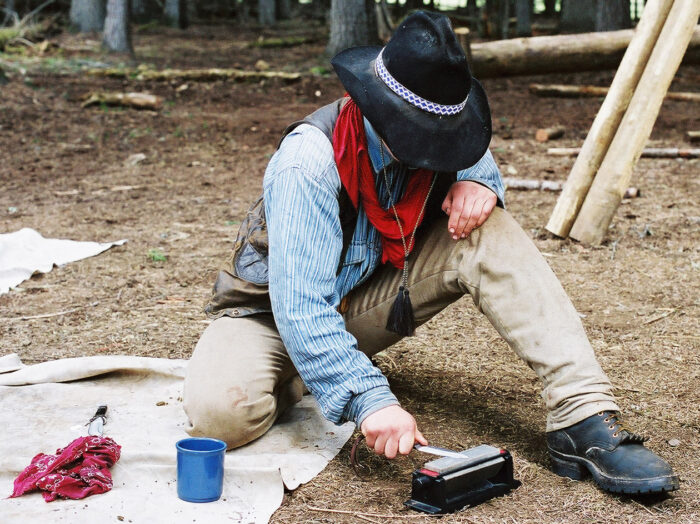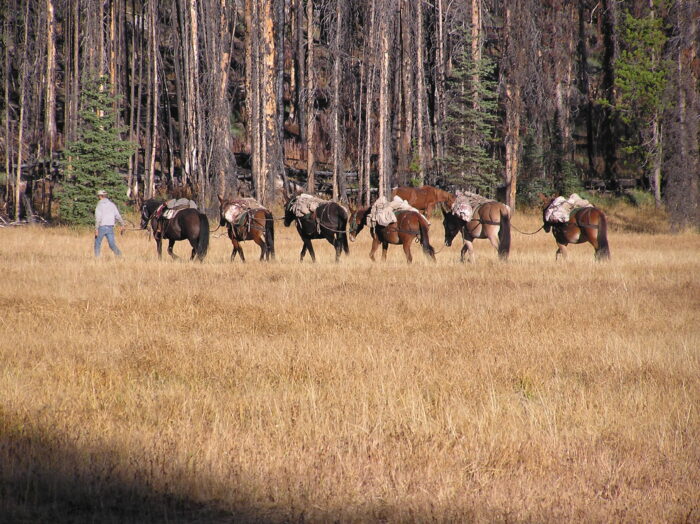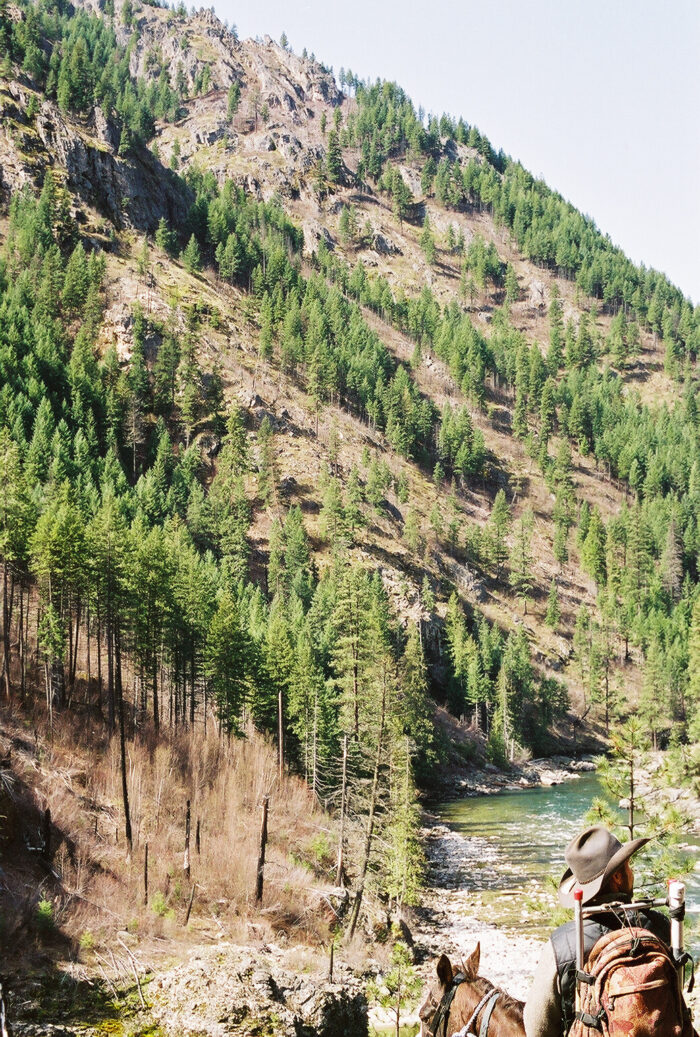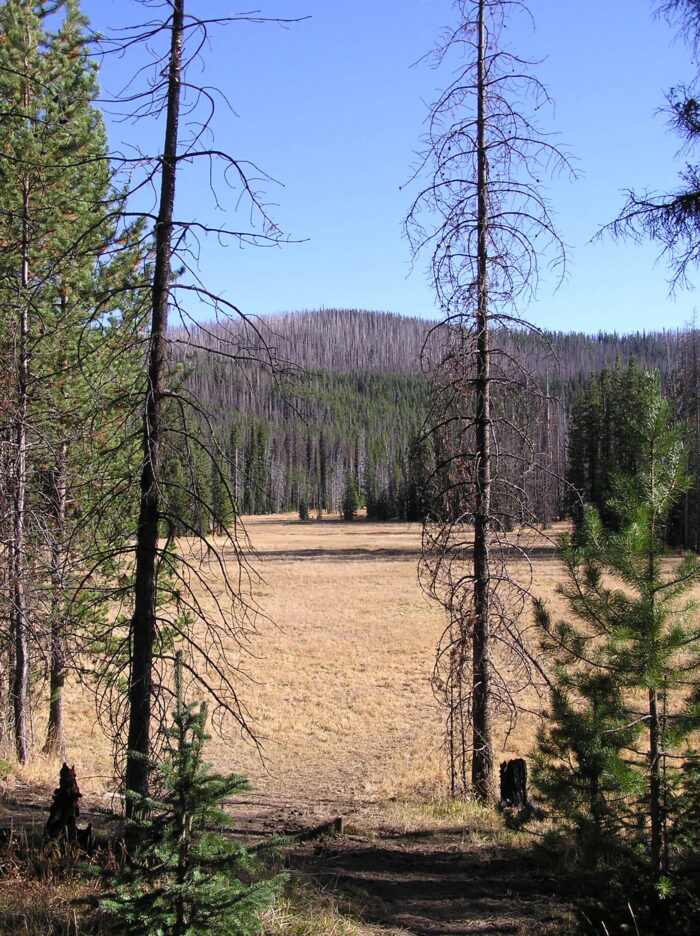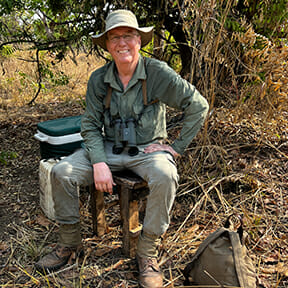The Communication Skills of a Guide
Larry’s grin widened as he reviewed the facts about the “Bear Crick Montana Testicle Festival.” “Yeah, it’s just an excuse for a drunk, but over 10,000 people show up to drink beer and eat mountain oysters”. “Oh, by the way, it’s called the ‘Testy Festy’ for short,” he added with an even bigger grin. Not for the first or last time, I wondered at the range of topics on which my Guide was an expert. Larry could wax lyrical on subjects as diverse as Native American customs to alfalfa farming, from the diamond hitch to the Bear Creek “excuse for a drunk.” I truly enjoy being in the presence of people who are both knowledgeable and well-spoken, who are, for lack of a better phrase, “master communicators.” Yet the best Guides aren’t just highly gifted in telling stories; they are also word artists whose entire purpose is to employ their communication skills to make the hunter’s trip an experience of a lifetime.
“Don’t you trust me?” Larry asked as he lowered the hand axe. He had already field dressed and skinned my elk with minimal help from yours truly, but now that the carcass was ready for quartering, he had told me to hold the half an elk upright while he chopped lengthwise through the backbone. I responded to his question and the twinkle in his one functional eye with, “I’d like to avoid having the moniker of ‘leftie’ for the rest of my life.” Now, a Guide who knows his stuff puts his hunter at ease with calming assurances. Larry was an artist in this type of verbal intercourse. So, he adjusted his patient look and said, “In my 30-year career, I’ve only maimed three or four hunters, so the odds are in your favor. Now, hold the elk steady.”
Guides often must use their vast repertoire of verbal assurances to calm their hunter’s unease due to a lack of familiarity with their four-legged companions – meaning horses and mules. A master Guide can accomplish this even when the hunter is riding in the dark, on a nervous horse, along a precipitous trail near a roaring river. A case in point occurred on a trip I took into the Selway River backcountry after a black bear.
It seemed that darkness always found my guide, Tim, and me, riding along the rocky ledges of the Selway. Until that trip, I had considered the old saying “too dark to see your hand in front of your face” to be an exaggeration for effect. I was wrong. On trips back to camp each night, the only thing visible were the sparks from the shoes of Tim’s horse as it scrabbled frantically for a hold on the downward-sloping granite near the sheer dropoffs. I never saw the sparks from my horse’s feet since I closed my eyes when it was our turn to slide toward the roaring cataracts. However, I was with a perceptive and sensitive guide who could sense my discomfort.
To alleviate my concerns, Tim assured me that there was a surefire technique to enable a rider to survive a tumble over the dropoffs near which we were riding. “It’s simple,” he said one night as we slithered our way repeatedly toward certain destruction. “If your horse goes over the edge, kick your foot out of the downhill stirrup and just roll uphill away from your horse.” Being a scientist, I asked the obvious data question. “So, have you ever known that to work?” “Sure have,” Tim answered. “A couple of years ago, another guide named Curt was riding along this same trail, just about in this exact spot. His horse got a bit close to the edge and broke through an undercut. Well, quicker than you can say, “Oh my!!” they were over the drop and rolling toward the bottom. But Curt kept his wits about him and did a sideways, double somersault, ending up holding onto a bush while his horse went tumbling on into the rocks at the bottom.” Not feeling any better about my chances in a similar situation, I said with a shudder, “So then I guess he was, o.k.?” “Yeah, he was,” Tim answered while sucking his teeth, “that is until the mule he was pulling broke through the undercut and rolled right over the top of him.”
Guides are always sensitive to their hunter’s feelings. The best Guides, like Tim and Larry, always aim to build up the hunter’s self-esteem, thereby increasing the hunter’s confidence. The Guide only encourages and is very careful to avoid mentioning any mistakes made by their hunter. As an example, consider the following interchange between Larry and me. “Man, you did great,” Larry exclaimed. “You really held your composure and were patient and then took the shot when it came.” I had just endured 30 minutes of my guide trying to irritate a trophy elk into stepping from behind a screen of trees. It had worked, and we would soon discover the 250 grain Nosler Partition from my .35 Whelen Improved, custom-built rifle had done its job.
“Yeah,” Larry continued, “I’ve had hunters yell at the animals instead of shooting, jack all their cartridges out onto the ground without pulling the trigger, and look everywhere for the 800-pound bull, everywhere that is except 40 feet straight in front of them where it was standing in the open. But boy, not you; there must be John Wayne amounts of ice water running in your veins!” Not wanting the celebration of my excellence as a hunter to stop, I prompted Larry one last time with a humble “Well, are you sure I did everything just right?” I sat back, half closing my eyes, and waited to have the compliments waft over me. He looked at me from the corner of his one good eye and said, “Now that you mention it, I noticed you fiddling with your scope magnification. And I just want to tell you that if you had missed your only opportunity to shoot that elk because of it, I would have been all over you like stink on a skunk!”
The very best Guides, like Larry, enrich the hunter’s experience by also involving them in the post-harvest tasks. I already mentioned that I got to hold the meat while Larry tried to chop my hand off, but I wanted to do more. I had been watching Larry and the other Guides, and I was certain I could tie up the mannie packs as well, and as fast as they. “are you absolutely certain that I can’t help you mannie the meat and get the packs onto the mules?” I asked for the 15th time. Larry slowly straightened up from where he was crouching over the packs. He turned toward me and said very slowly, almost like he was talking to a child, “There are three things you can do for me. Number 1 quit asking me that question, Number 2 stay out of my way, and Number 3, and most importantly, quit standing on the end of my rope!”
To conclude this essay, let me state again what I said at the outset, the most gifted Guides are master communicators. They never use ten words when two will suffice, they always express themselves in clear, certain tones and they always – repeat always – encourage dialogue between themselves and their hunter. An excellent example of just such a positive interaction occurred between Larry and myself concerning the fact that, in addition to my elk tag, I carried a permit for a black bear. I had already collected a trophy black bear two years before, but if the opportunity arose, I wanted another. In this vein, I asked Larry if he thought a bear might come to the remains of my elk. He looked at me and brought our dialogue to a close with, “God, I hope not!” I must have looked shocked because he answered my stare with “I am an Elk Guide. Bears are nasty, greasy, tick-infested animals and if you shoot one, you will be gutting, skinning, and carrying it out yourself!” I thought about asking Larry whether he would be willing to tell me how he really felt about bears, but he seemed to be grumbling under his breath and had once again picked up his axe.
Mike Arnold has been a life-long hunter. The Hunter’s Horn blew very early for him. From the age of five, Mike has spent months each year pursuing game animals – from quail and rabbits behind his parents’ house, to kudu and leopard in Africa, and Brocket deer in Mexico. Mike’s articles include feature pieces in Sports Afield, Hunter’s Horn, Safari Magazine, and African Hunting Gazette. Mike also produced two TEDx presentations on the topic of conservation-through-trophy-hunting. You can find links to many of his articles and his Blog here.
Mike is also a Professor and the Head of the Department of Genetics at the University of Georgia. He works in conservation biology and is the author of the 2022 book, BRINGING BACK THE LIONS: International Hunters, Local Tribespeople, and the Miraculous Rescue of a Doomed Ecosystem in Mozambique. Mike’s book is available for purchase at bringingbackthelions.com, Amazon and local bookstores.

